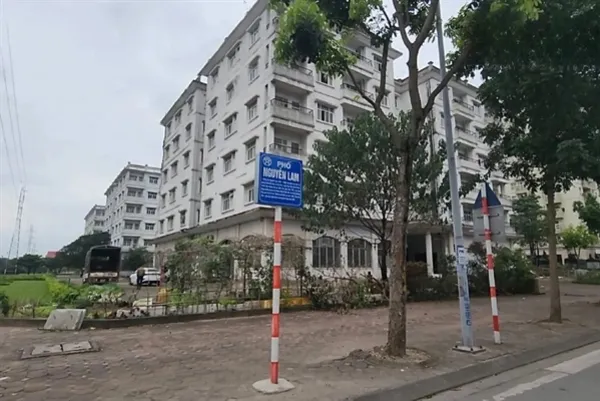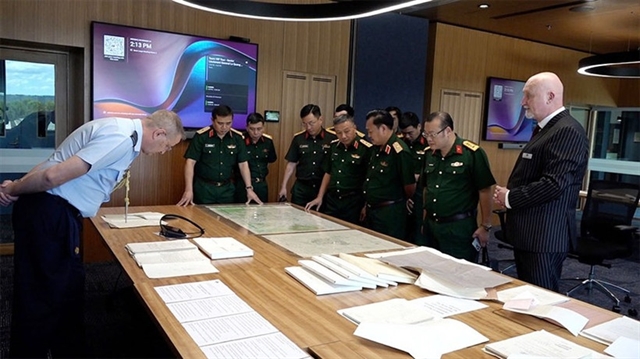 Society
Society

 |
| A resettlement housing project in Hà Nội's Cầu Giấy District. — VNA/VNS Photo |
HÀ NỘI — While property prices continue to skyrocket, thousands of resettlement apartments stand abandoned, highlighting a troubling paradox - a huge waste of resources in the face of growing housing demand.
In Hà Nội and HCM City, nearly 18,000 resettlement apartments remain vacant or are being used inefficiently, leading to the decay of entire infrastructure systems.
These projects, backed by state investments worth trillions of đồng, were designed to accommodate displaced residents but now lie neglected, the Voice of Việt Nam reported.
Some were even constructed on prime 'golden land' locations, adding to the irony of their abandonment.
Hà Nội alone has nine resettlement projects with almost 2,500 completed apartments, yet many remain unoccupied.
Surrounding infrastructure is deteriorating, staircases rusted, walls peeled, glass shattered litter the ground and discoloured paintwork gives buildings a derelict appearance.
Overgrown weeds have overtaken public spaces, while playgrounds and internal roads have become dumping grounds for rubbish.
Uncollected waste and stagnant water foster unhygienic conditions, posing serious health risks.
Despite the availability of thousands of unused apartments, many families remain homeless.
The disparity is clear. Those who need it don’t have it, while those who have it don’t need it.
Many displaced households simply cannot afford these units, as resettlement apartment prices far exceed the compensation they receive when their land is reclaimed.
Housing crisis for workers
Dr Nguyễn Trí Hiếu, Director of the Global Institute for Financial and Real Estate Market Research and Development, said that the demand for housing among workers was huge.
Urban migration continued to rise, yet affordable housing remained elusive. While workers struggle to find adequate accommodation near their workplaces, the outskirts of cities were littered with "ghost projects", unfinished or deserted developments.
"Every year, millions of people move to urban areas and are forced to live in cramped rental spaces, sometimes squeezing entire families into just 10 square metres," Dr Hiếu said.
"Meanwhile, completed but abandoned housing projects waste valuable land and resources.
"Authorities must take decisive action, including revoking project licences if necessary. The Ministry of Construction and relevant agencies should set strict deadlines for project completion.
"If developers fail to meet them, the government should reclaim these sites, fairly compensate investors, and redevelop the buildings into social housing for workers."
He stressed that allowing thousands of resettlement apartments to sit empty while low-income workers endure poor living conditions was an urgent problem that must be addressed.
Legal expert Nguyễn Văn Đỉnh compared abandoned resettlement housing to unused office buildings, completed but left empty, causing massive financial and social waste.
"Resettlement housing is a critical part of land reclamation policies. When the state acquires land for essential projects - be it national defence, infrastructure, or economic development -it must ensure that displaced residents receive fair compensation and alternative housing," Đỉnh said.
"Unfortunately, many resettlement projects are built in inconvenient locations, far from people’s original communities, with poor infrastructure and amenities. Subpar construction quality further discourages residents from moving in."
For future housing policy, he proposed integrating resettlement housing into broader urban and commercial development plans rather than treating them as isolated projects.
Đỉnh added: "Instead of building separate resettlement zones, authorities should allocate land within urban developments to accommodate displaced residents.
"Other viable solutions include repurposing social housing or purchasing existing commercial apartments for resettlement purposes. This would provide affected households with more choices and better access to amenities."
Solutions
The large-scale abandonment of resettlement apartments signals failures at multiple levels, from project planning and policy approval to execution and management.
Every completed project should undergo feasibility assessments to ensure it serves its intended purpose. Public investment must be based on necessity, efficiency and long-term viability.
"As public assets, these projects must not be allowed to deteriorate into financial black holes. The best solution is to auction them off. Well-maintained housing blocks could be sold for residential use, while deteriorating ones should be redeveloped," said Đỉnh.
Many were designed with outdated features, some lack underground parking, while others only provide limited vehicle space.
Đỉnh added: "Auctioning these properties would enable redesign and redevelopment, allowing new investors to breathe life into these sites.
"Given that many of these abandoned projects occupy prime locations, a properly managed auction process could recover public investment, boost state revenue, and prevent further waste." — VNS




